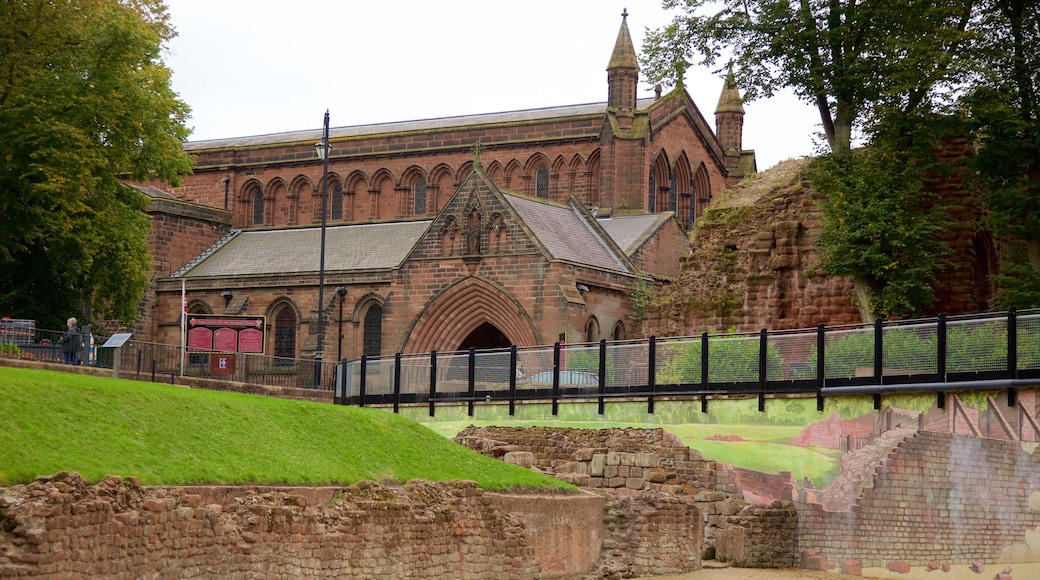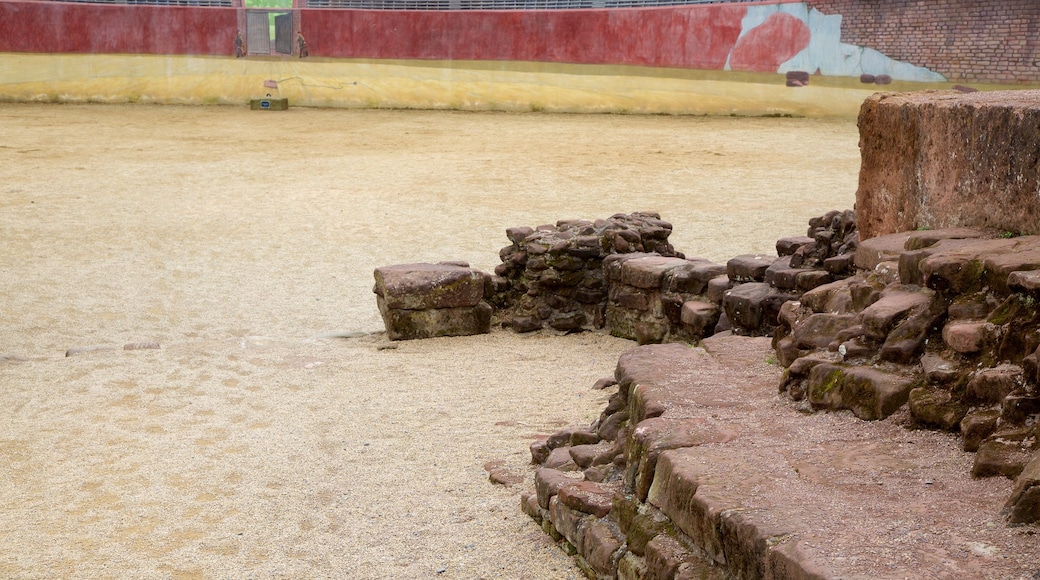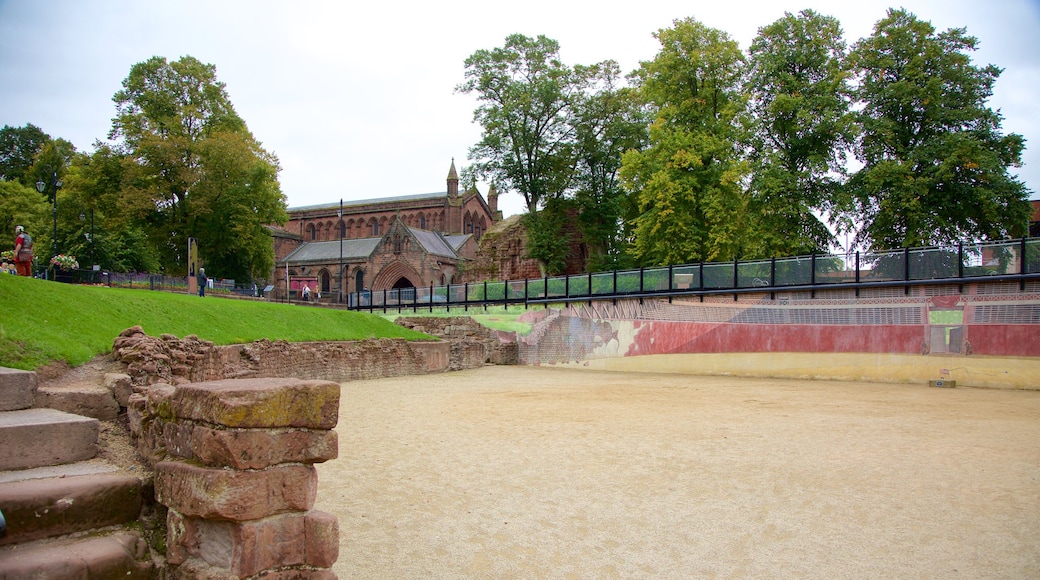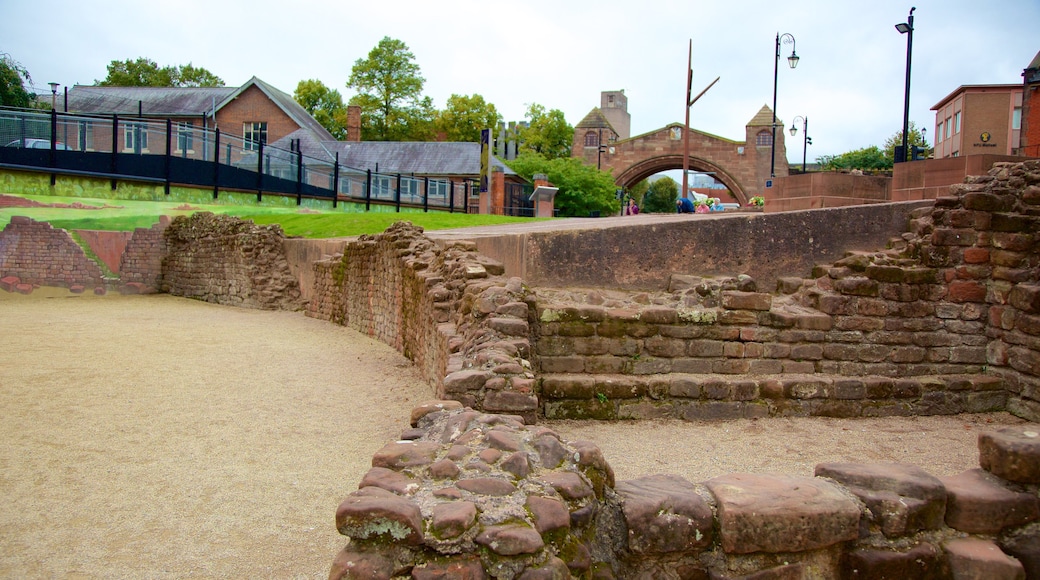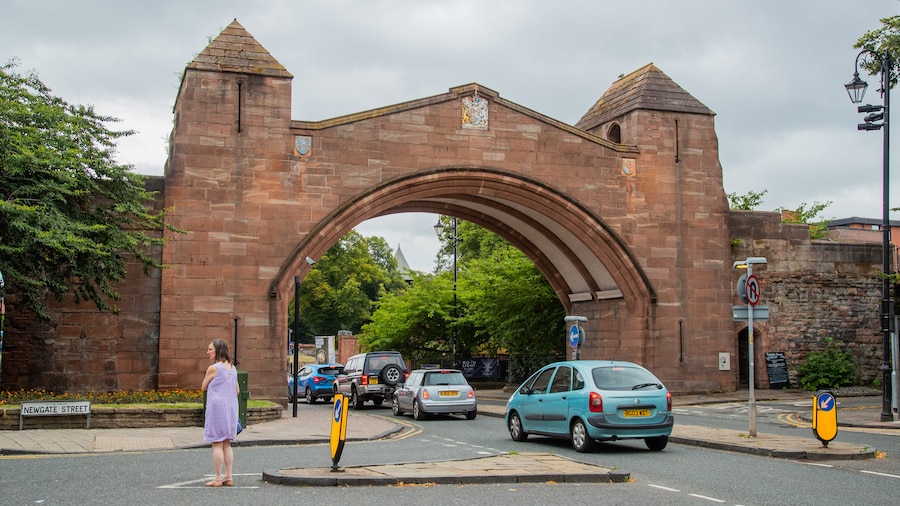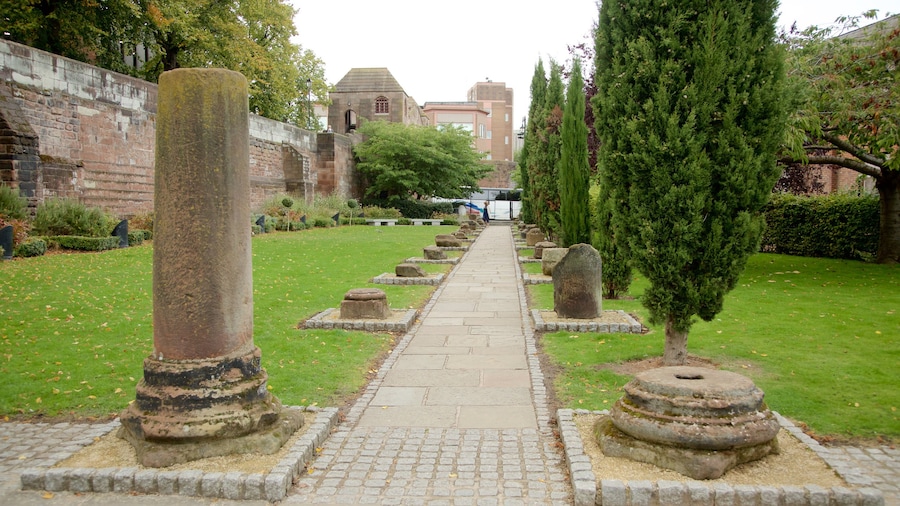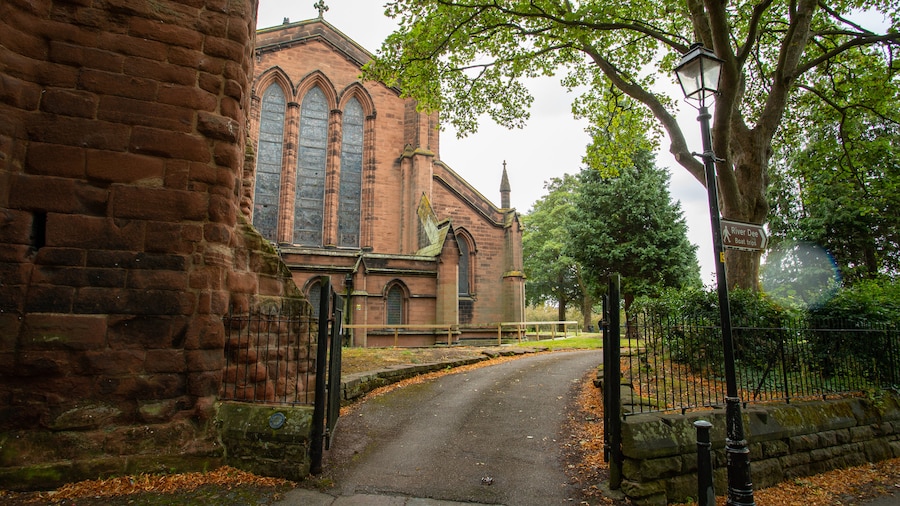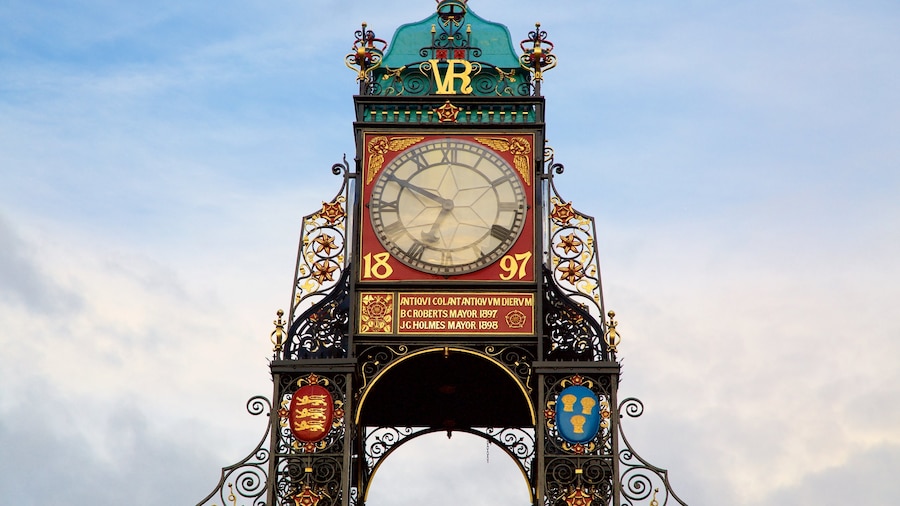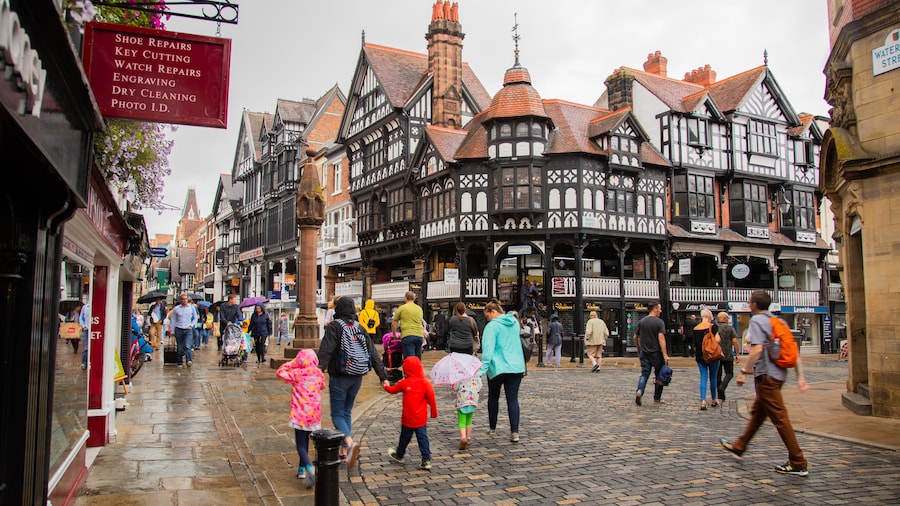Discover the importance of the Roman settlement that predated Chester when you explore the ruins of an enormous arena brought back to life with a mural.
The Roman Amphitheatre is a set of ruins from the 1st century, when modern-day Chester was a Roman settlement. The historic site is the largest archaeological discovery of its kind in the country. Today, only a semicircle of the original structure remains, comprising of a central pit and stone walls. Read the informative signs to discover how the site was used for gladiator combats, wrestling and cock fighting.
The site was founded alongside the Roman fort of Deva Victrix inside the city walls. It was originally one of two stone amphitheaters, each with wooden seating. Check out the sheer size of the structure to imagine the importance of this settlement to the Roman Empire. It was abandoned in the 4th century and fell into ruin before its rediscovery as an archaeological relic in 1929.
In its heyday, the amphitheatre had a height of 40 feet (12 metres) and a capacity for between 8,000 and 12,000 people. Imagine the structure during an event 2,000 years ago, with bustling stalls, food stands and stables. A network of dungeons stood beside the amphitheatre. Some believe that gladiators were chained and tortured for the amusement of spectators, but the exact events and traditions of the Romans at this amphitheatre remain a mystery. Much of its material was used to construct the medieval city walls nearby. See the remnants of the shrine to the Roman goddess Nemesis at the northern part of the arena.
Marvel at the optical illusion mural that gives visitors an impression of how the amphitheatre would have looked at its peak.
Visit the ruins for free during daylight hours. The Roman Amphitheatre is located to the east of the Chester City Walls in the centre of the city. Walk north for 5 minutes from the River Dee. Visit nearby landmarks, such as Grosvenor Park, the Wesley Church Centre and Chester Roman Gardens.
